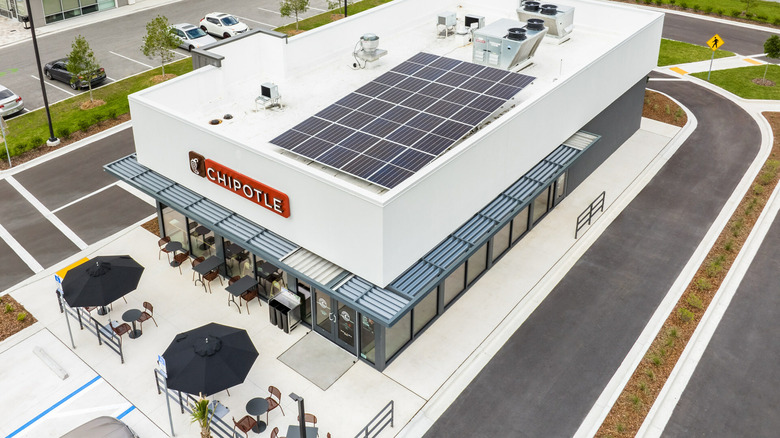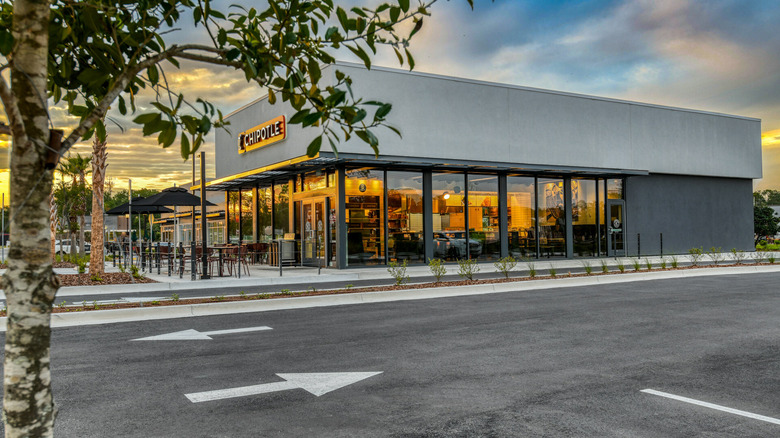Chipotle To Shrink Its Environmental Footprint With Electric Restaurants
In June of last year, the FAIRR Initiative reported a landmark agreement between concerned investors and more than a half-dozen of the world's biggest fast-food and fast-casual restaurant chains. The restaurant group – which included Burger King, Chipotle, and Domino's, among others – publicly committed to a far-reaching environmental plan known as the Science-Based Targets initiative (SBTi), which called for them to significantly scale back their greenhouse gas emissions. Chipotle and Wendy's, for example, agreed to cut their carbon emissions in half by 2030.
For those who wondered how Chipotle would meet this ambitious goal, the company is now providing a blueprint. The Mexican-themed chain recently announced via press release that it has debuted two new "all-electric" restaurants which are powered solely by renewable sources and thus designed to optimize energy efficiency. The two new restaurants – located in Jacksonville, Florida, and Gloucester, Virginia – get their electricity via wind and solar-powered energy, plus renewable energy credits. That means the electricity is certified to have come from a renewable source.
These pilot locations are only the start. Chipotle has another all-electric location in the works in Castle Rock, Colorado, which will open in a few months. The company also plans to have 100 such restaurants operating by 2024 and perhaps many more in the years to follow.
How Chipotle is reimagining restaurant design
Chipotle's all-electric design might be seen as a step in the right direction, but the chain knows it will have to take other steps to meet its major emissions commitment. Its 129-page 2022 sustainability report indicates that Chipotle produced more than 206,000 metric tons of direct carbon in 2022. There is also the issue of waste disposal. The company sent over 203,000 short tons of waste to landfills. However, the report also highlights how Chipotle managed to compost or recycle over 196,000 short tons of refuse.
Perhaps this emphasis on reducing and repurposing waste helps explain why the pilot restaurants aren't just distinguished by new rooftop solar panels but also features like chair upholstery made from cactus leather, art made from recyclable materials, and biodegradable flatware, cups, and lids. Some new design locations will even showcase parking lot charging stations, so electric car owners can charge up while they're filling up on Mexican specialties inside.
Chipotle confirms that the new design will help it achieve the SBTi goals it's targeting for 2030. Specifically, that means 50% fewer greenhouse gas emissions compared to where the chain was in that regard in 2019. The company has promised to cut emissions in all three categories – Scope 1, 2, and 3. These categories cover emissions caused directly by its restaurants, and indirectly through suppliers in its food chain. The company also intends to focus on buying fresh local produce, which will be reflected on Chipotle's menus via expanded vegan and vegetarian offerings.

